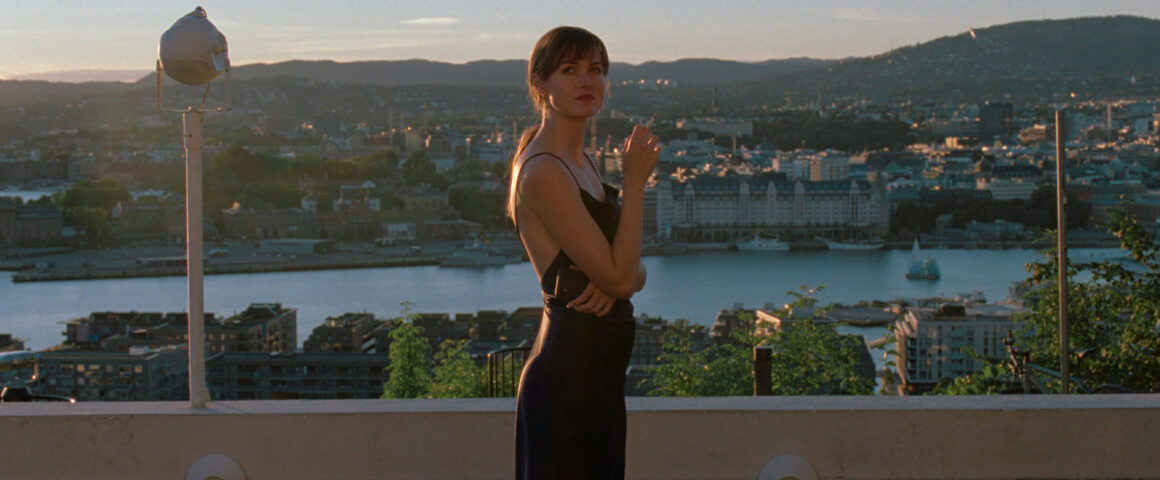“To exist is to change, to change is to mature, to mature is to go on creating oneself endlessly” — Henri Bergson
Some people experience maturity at an early age when they are thrust by circumstances into a position of responsibility before they are ready. Some do not experience it until their twenties, thirties, or even forties. Others never do. In a society where maturity is defined by what you do for a living, who you are with, and whether or not you are emotionally and/or financially independent, lacking these attributes can lead to serious doubts of self worth. Brilliantly performed by Renate Reinsve (“Welcome to Norway”), winner of the Best Actress Award at the Cannes Film Festival, Joachim Trier’s (“Oslo, August 31st”) masterful The Worst Person in the World tells the story of four years in the life of Julie, a young woman feeling adrift without concrete goals or relationships who, like Frances Ha in Noah Baumbach’s comedy of the same name, must confront the idea that she is floundering and lacking direction in life.
Written by Eskil Vogt (“The Innocents”) and nominated for Academy awards for Best Original Screenplay and Best International Film, the film is divided into 12 chapters with a prologue and epilogue thrown in. The Worst Person in the World does not contain any very, very bad people. The title, according to the director, derives from the idea that many young people in Norway conclude that if they fail at one thing or another, they are then “the worst person in the world.” Trier says, “It’s a Norwegian term.” It’s also self-deprecating. “Oh. I failed. I’m the worst person in the world.” It’s that feeling of misery and personal failure — in love, for example.” “When was life supposed to start?” asks the narrator on Julie’s behalf.
Drifting between a desire to become a medical doctor, a psychologist, a photographer, and a writer, on turning 30, Julie is certain about one thing. She does not want children until she is ready, especially to her way of thinking, not when she has so much unfilled potential. She is holding out for an undefined, perhaps illusory time when suddenly everything will come together. The issue crystallizes when she meets and falls in love with Aksel (Anders Danielsen Lie, “Bergman Island”), a graphic novelist whose cartoon creature “Bobcat” is modeled after a big Nordic cat. He is a man ten years her senior who feels that time for him is fleeting and he wants to raise a family but feels blocked by Julie’s refusal.
After crashing a party, Julie meets Eivind (Herbert Nordrum, “Amundsen”), a young, modern thinking, and relatively unambitious counter man at a coffee shop. He is a man of simple pleasures, very much unlike Aksel who does not make too many demands on her. Both married, in a chapter, ironically labeled “Cheating,” they decide not to cheat on each other’s partners, but it takes a more subtle, tongue-in-cheek turn. Julie asks him, “I don’t want to be unfaithful; we both have partners, but are we allowed to do something, on the edge, that’s considered not unfaithful?” We can figure out the answer.
After being together for a few years, Julie tells Aksel in a powerful sequence that she wants to separate, expressing her desire to move beyond needing acceptance to find a degree of self-realization. In one of the best scenes, the world freezes in space and time as Julie runs through the city looking to find Eivind after she leaves Aksel pouring her a cup of coffee. Filled with animated sequences, a psychedelic mushroom trip, and a peeing contest, the film does not fit our pictures about what a romantic comedy should look like. Trier said, “For a long time I have wanted to make a film about love. One that goes a bit deeper than normal onscreen love stories, where everything is so simple, the stories so clear-cut, the feelings so admirably unambiguous.”
“The film,” he continues, “doesn’t dwell on hackneyed debates over the perils of living online, but it does ache for simple, tangible pleasures: The heat of touch and spontaneous human connection, and the luxury of stillness.” Backed by a wide-ranging eclectic soundtrack that runs the gamut from Cobra Man, the Ahmad Jamal Trio, and Caribou to Billie Holiday, Harry Nilsson, and Art Garfunkel, The Worst Person in the World may be the worst film title in the world, but it is a work of warmth and freshness that thwarts our expectations at every turn, recreating the best of the genre, yet is also a film that has space for the pain of loss and regret. In its engaging way, the film tells us that who we really are is not about what we do or what we have but about our spiritual nature, the richness of character, and the ability to give and receive love.
As Art Garfunkel sings Jobim’s “Waters of March” during the final credits, Julie discovers that who you are is: “A flower that blooms, A fox in the brush, A knot in the wood, The song of a thrush, The mystery of life, The steps in the hall, The sound of the wind, And the waterfall, It’s the moon floating free, It’s the curve of the slope, It’s an ant, it’s a be, It’s a reason for hope, and the riverbank sings, Of the waters of march, It’s the promise of spring, It’s the joy in your heart.”




'Movie Review: The Worst Person in the World (2021)' has no comments